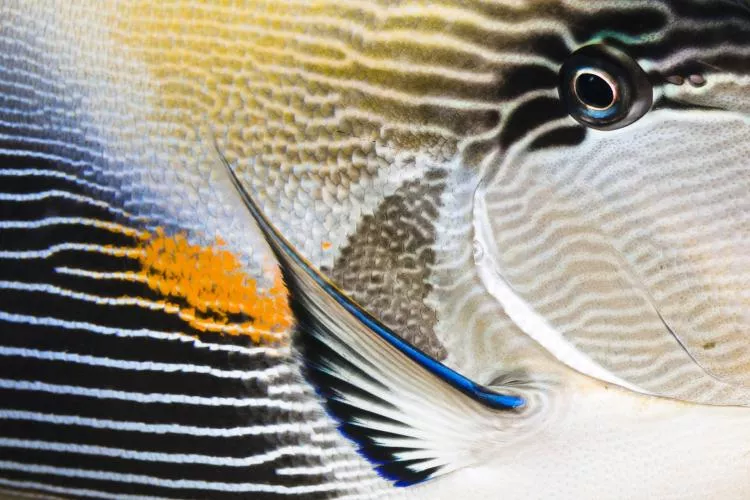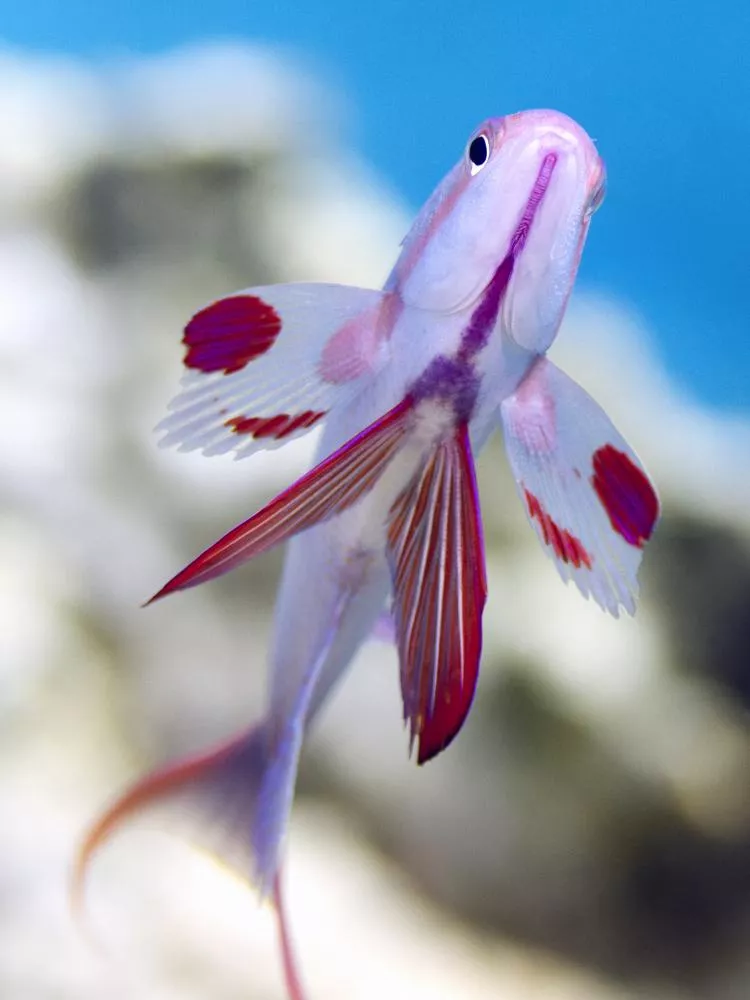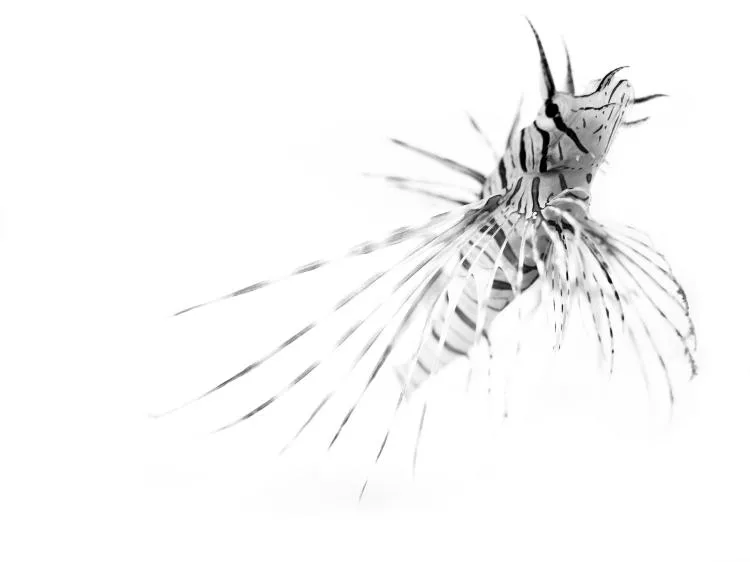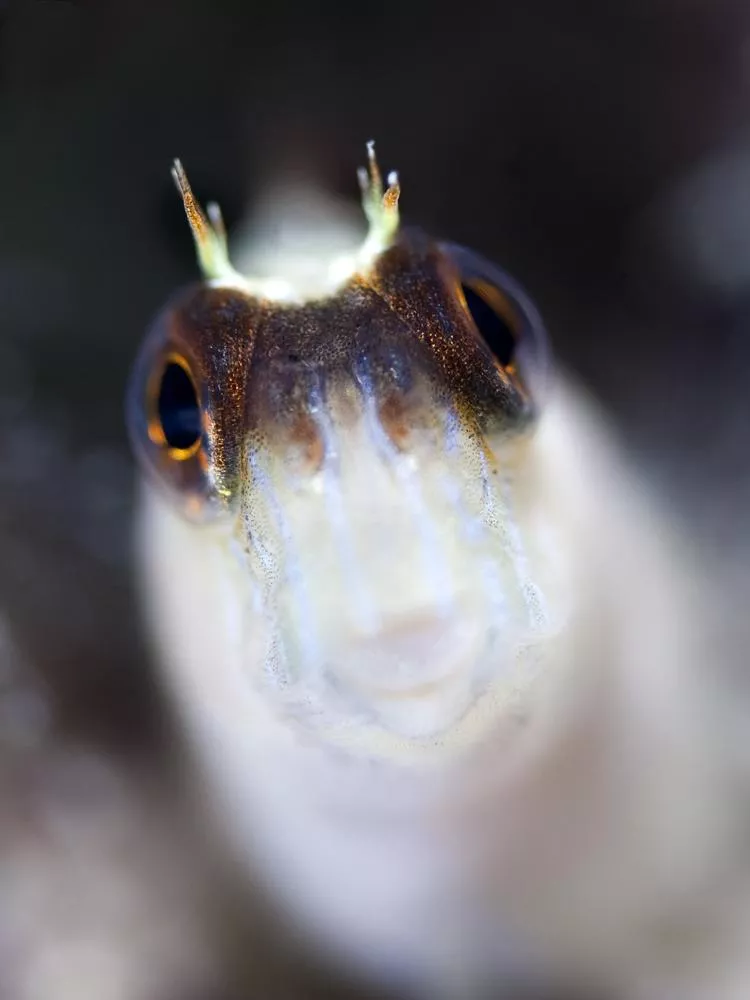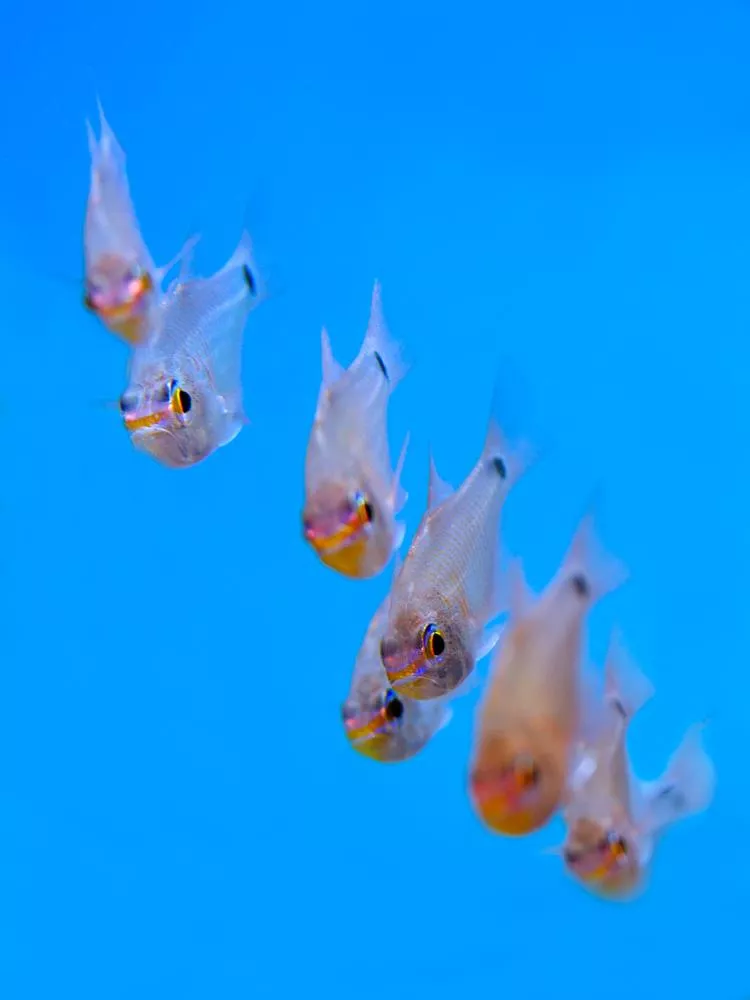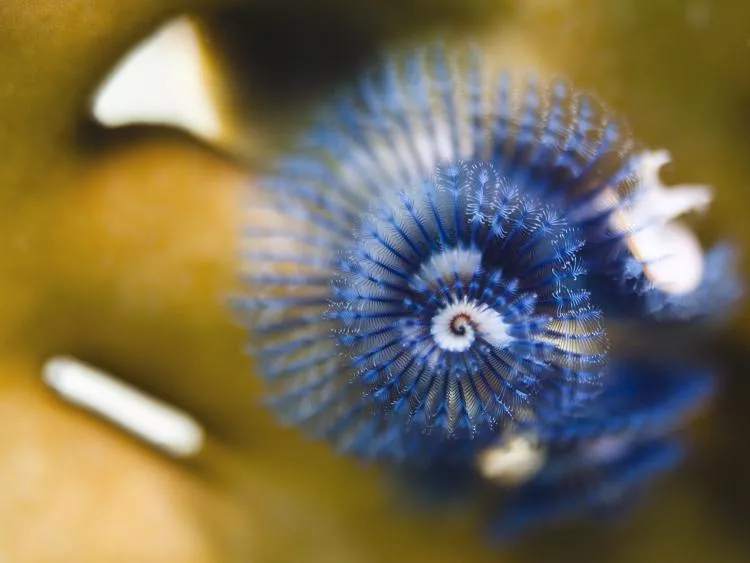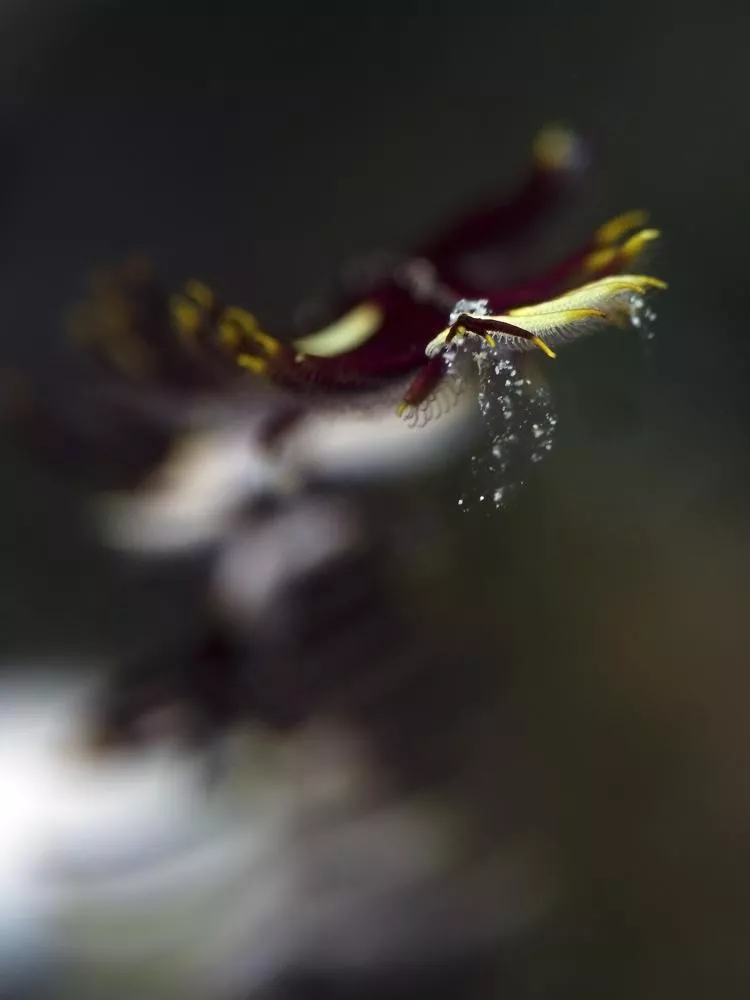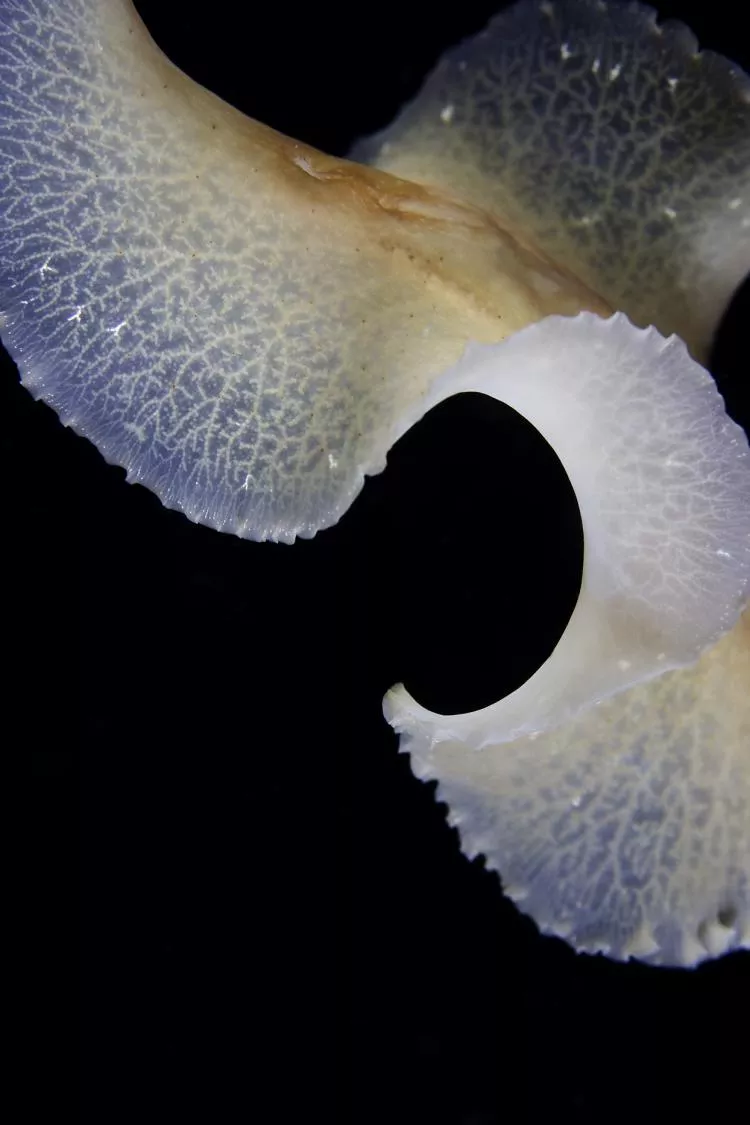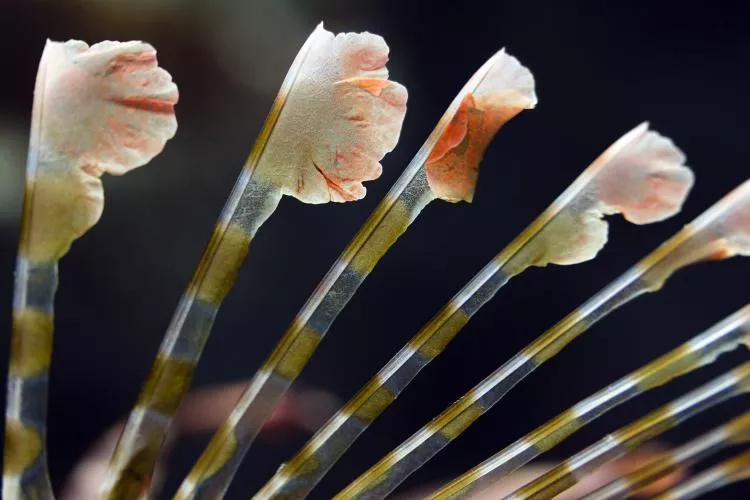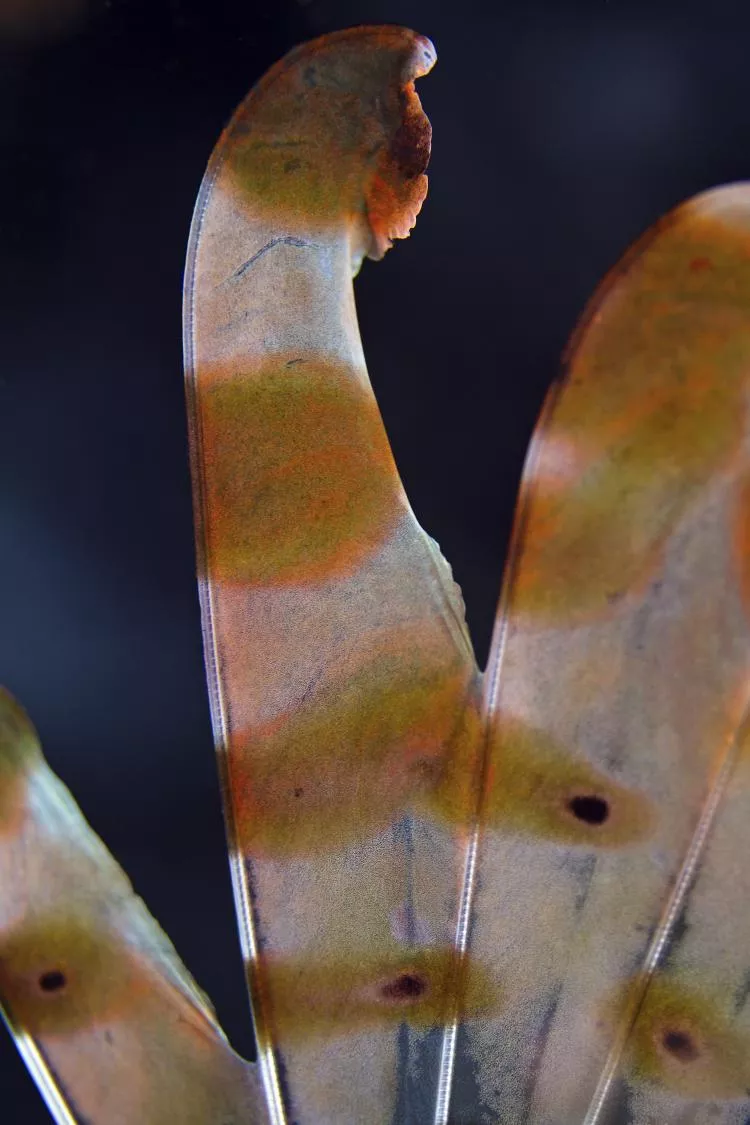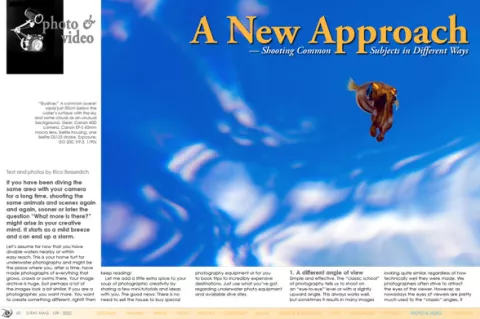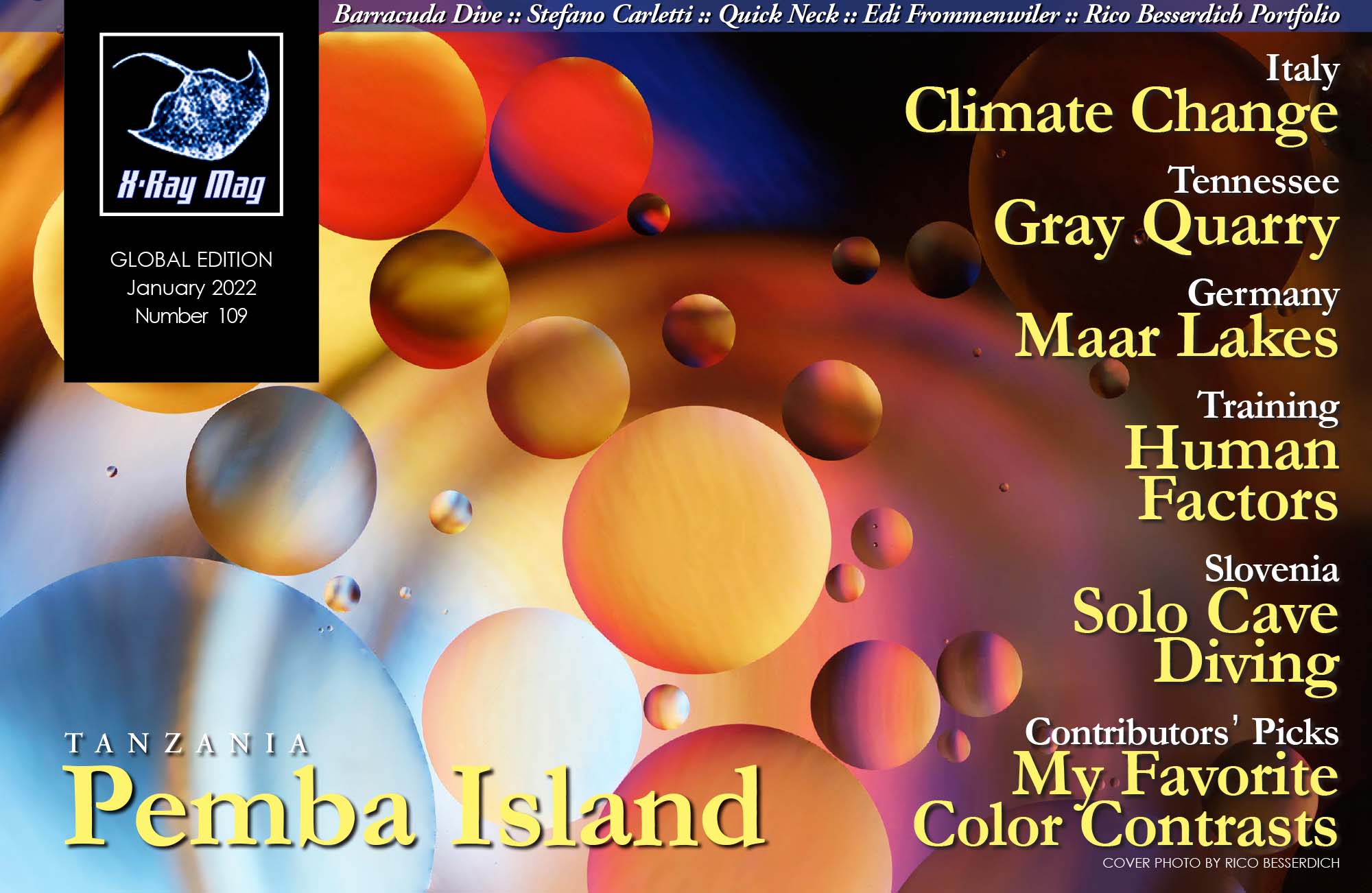If you have been diving the same area with your camera for a long time, shooting the same animals and scenes again and again, sooner or later the question “What more is there?” might arise in your creative mind. It starts as a mild breeze and can end up a storm.
Contributed by
Let’s assume for now that you have divable waters nearby or within easy reach. This is your home turf for underwater photography and might be the place where you, after a time, have made photographs of everything that grows, crawls or swims there. Your image archive is huge, but perhaps a lot of the images look a bit similar. If you are a photographer, you want more. You want to create something different, right? Then keep reading!
Let me add a little extra spice to your soup of photographic creativity by sharing a few mini-tutorials and ideas with you. The good news: There is no need to sell the house to buy special photography equipment or for you to book trips to incredibly expensive destinations. Just use what you’ve got, regarding underwater photo equipment and available dive sites.
1. A different angle of view
Simple and effective. The “classic school” of photography tells us to shoot on an “eye-to-eye” level or with a slightly upward angle. This always works well, but sometimes it results in many images looking quite similar, regardless of how technically well they were made. We photographers often strive to attract the eyes of the viewer. However, as nowadays the eyes of viewers are pretty much used to the “classic” angles, it might be worth a thought to try something different.
Try shooting with an extreme upward angle of view. “Looking up” is the key. At some spots, you might not be able to look through your camera’s viewfinder. Shoot “from the hip” then. Once you know the basics of your camera and the focal range of your lens, this simple technique can get you very different results. The angle of view is one of the most powerful tools in photography in general, not just in underwater photography.
2. Going high-key
Black backgrounds with a photogenic subject in the foreground is an all-time classic composition in underwater photography. Images made this way do always work, and that might be a reason why we see so many of them. So, how about doing the extreme opposite? Why not a white (or very bright) background?
In high-key photography, everything is done with light. To achieve a white background in an underwater image, you might carry an artificial one (a white plastic plate or blanket) with you, but this is not always practical unless you have several people assisting you. Remember: We must work with what we’ve got. A different way to do it is as follows:
Find yourself an interesting subject that crawls or swims over sandy ground or swims in very shallow, brightly lit waters.
You will need one or two powerful strobes (or a very powerful torch).
Set your camera to “spot measuring” and measure only the main subject but not the sand or water.
Your camera will then suggest to you a setting that provides a proper exposure of the main subject. Logically, the brighter background (sand) will then be overexposed, and that is the trick. We use overexposure as an element of composition.
Take your shot. The sand will reflect the light of your flash, which results in a very bright to completely white background, while the main subject is still well-exposed. Voila!
3. Going shallow
In classic macro photography (underwater or topside), it is usually the aim of the photographer to achieve an ideal depth of field, having as many details as possible in the image of any macro subject. This is usually done by using f-stops between f/9 and f/16 (depending on the camera used). This works well, and it shows viewers of the image what they normally expect to see. But creative photographers rarely want to fulfil the expectations of the viewer. They want to create new imagery; they strive for a different perspective, a different approach.
Not meant as a “provocation” but as a different approach to underwater macro photography, let’s go shallow. Let’s work with wide-open f-stops (f/2.8 to f/4). The result then would be an image with an incredibly shallow depth of field, with only a small area of the subject in focus and the rest smoothly blurred away. The “classic” technique here would be setting the focus only on the eye (of a fish) or the rhinospheres (of a nudibranch); however, setting the focus on different areas could open up other ways to create interesting abstract shots as well.
This technique is often called “bokeh,” but actually, true bokeh affects the quality of the areas in the image that are out of focus and has little to do with shallow depth of field.
How to do it:
Just set your camera to the widest aperture (the lowest f/stop number) provided by the lens in use. On good macro lenses, f/2.8 is sometimes a little extreme, but f/3.5 to f/4 does often work well. Keep in mind that with such an open aperture, much more light will hit your camera’s sensor. You will need to adjust the ISO (to the lowest setting!), shutter speed (mostly higher than usual) and flash power (lower than usual, but it depends on the depth of your dive and the available ambient light) accordingly to prevent overexposed photos.
4. Abstract macro
One more tip for macro fans: Instead of working on macro photographs that clearly feature the typical characteristics of the photographed subject, a more abstract interpretation (be brave!) often results in pleasing and unusual images. Remember that in abstract photography, the subject itself is secondary. Often, viewers do not even know what the subject actually is, and this then gives them room for their own interpretations. Each person may see, imagine or sense something different from someone else, when looking at such a photograph. They will look again and again, they will think and talk about it (the image), and for the photographer, this then could be the first step into the world of fine art. We do not have to dictate to the viewer anymore, what they have to see in images, we can leave it up to them to perceive what they “want” to see in the photograph.
Patterns of all kinds, shapes, details like fins, legs or the interplay of colours and light on any given macro subject, work well. It just needs a little courage on your part to step away from the “classics” and keep your eyes and mind open to a different approach to underwater photography.
Rico Besserdich is a German artist, lecturer, photography instructor, writer, photo contest judge and professional underwater photographer living in Turkey. Involved in photography since 1978, he has specialised in underwater photography since 2000. His work has appeared in over 300 magazine and book publications around the world and has been translated into nine different languages. Rico also conducts workshops and seminars on “Artistic Underwater Photography” at the fine arts university HBKsaar in Germany, which is the first time a professional underwater photographer has been invited to do so. In addition, he has given presentations at various photography-related events, universities and dive shows in Europe and has displayed his work in several fine art photography exhibitions. Rico is a CMAS/IAC Instructor Trainer (Moniteur 3) with around 5,000+ logged dives. For more information, please visit: maviphoto.com.

